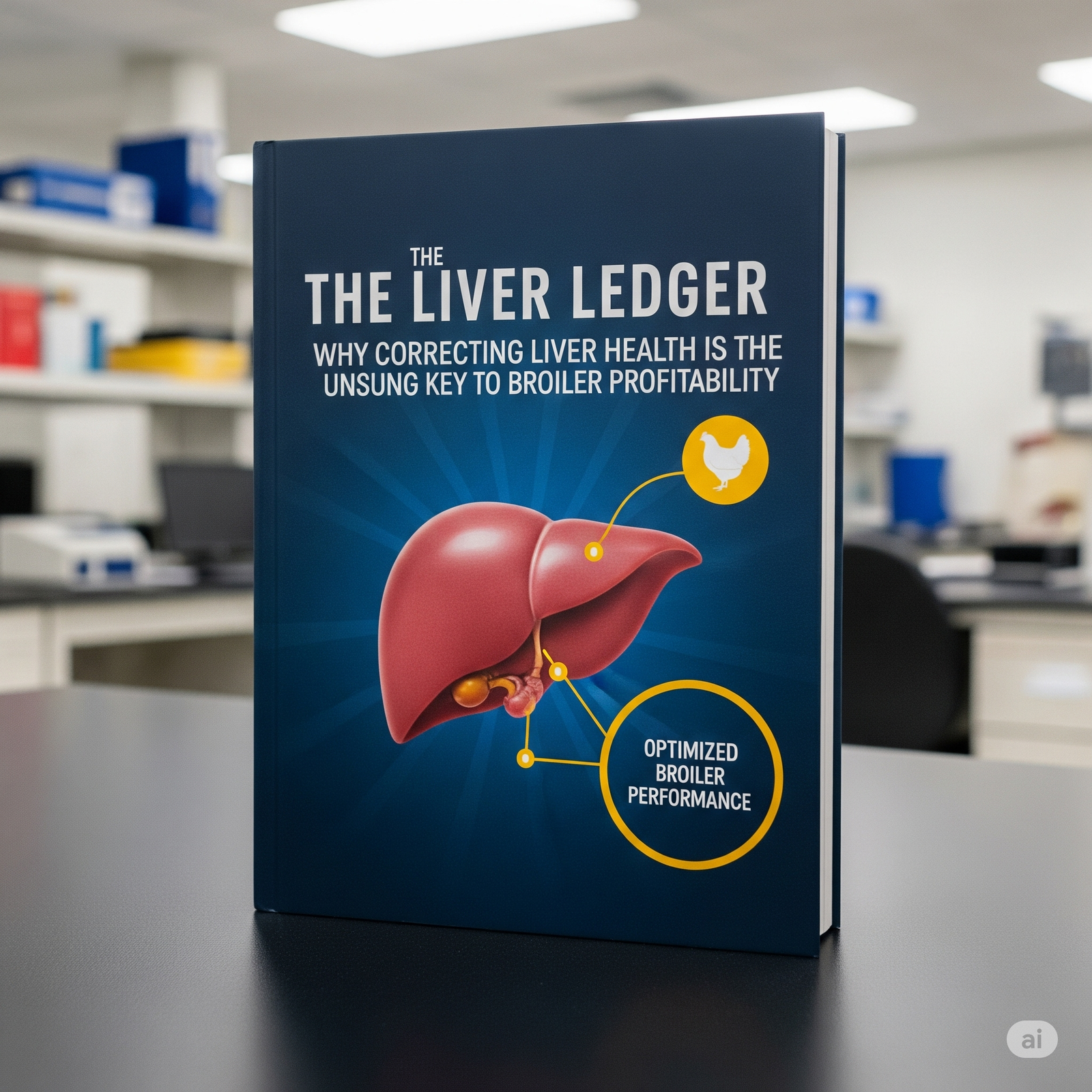In the world of poultry production, much of the spotlight falls on growth rate, FCR, immunity, and gut health. But hidden beneath the surface—quite literally—is an organ that quietly determines the economic trajectory of your flock: the liver.
Why the Liver Matters in Broilers
The liver is the biochemical powerhouse of the bird. It handles:
- Detoxification of feed toxins (e.g., mycotoxins, chemical residues)
- Fat metabolism and energy balance
- Protein synthesis and nutrient conversion
- Immune modulation and pathogen control
When the liver is compromised, everything else — from digestion to immunity to growth — suffers. But here’s the catch: liver dysfunction is often silent until it becomes economic damage.
⚠️ Common Causes of Liver Dysfunction in Broilers
- Mycotoxins: Even below detectable limits, they impair hepatic function.
- Overfeeding fat/oil: Leads to fatty liver and impaired metabolism.
- Synthetic drug residues: Long-term antibiotic exposure burdens liver detox pathways.
- Poor gut health: Leaky gut increases toxin load on the liver.
- Fast growth stress: High metabolic rate overwhelms the liver.
- Viral and bacterial infections: Diseases like IBD, IBH, or fowl adenovirus often target liver cells.
How to Identify Liver Stress
While blood tests like ALT, AST, or bile acid levels are uncommon on the field, gross liver evaluation at necropsy tells the story:
- Swollen, pale, friable liver = fatty degeneration
- Spotty, hemorrhagic liver = toxin or viral impact
- Shrunken, fibrotic liver = chronic dysfunction
Field indicators:
- Sluggish growth after 3rd week
- Feed refusal or poor FCR despite good feed
- Wet litter, vent pasting, and poor feathering
- High susceptibility to E. coli or IBH
💰 Economics of Ignoring Liver Health
Ignoring liver function is like driving a truck with a clogged engine. You burn more fuel (feed), go slower (low ADG), and wear out your parts (immune suppression).
A mild, subclinical liver dysfunction can silently raise your FCR by 3–5 points, translating to thousands in additional feed cost per cycle in large operations.
Moreover, liver-impaired flocks show poor carcass yield — excess fat, water retention, and uneven weights, impacting your bottom line at market.
The Case for Liver Correctors
Liver-corrective feed supplements help by:
- Enhancing detox pathways (silymarin, choline, methionine)
- Supporting fat metabolism (carnitine, lecithin)
- Improving bile secretion for digestion (bile salts, turmeric extracts)
- Reviving damaged hepatocytes (herbal adaptogens, antioxidants)
Timing matters: Start early (Day 4-5), especially in summer batches, antibiotic programs, or high-density operations.
Final Thoughts
In broiler farming, success lies in preventing invisible losses. Liver correction isn’t just a health strategy — it’s an economic lever.
If you want performance consistency, better ROI, and fewer post-mortem surprises, don’t just look at your feed or biosecurity. Look at the liver.
Your feed gets digested there. Your drugs get metabolized there. And your profits, believe it or not, often get stuck there.

